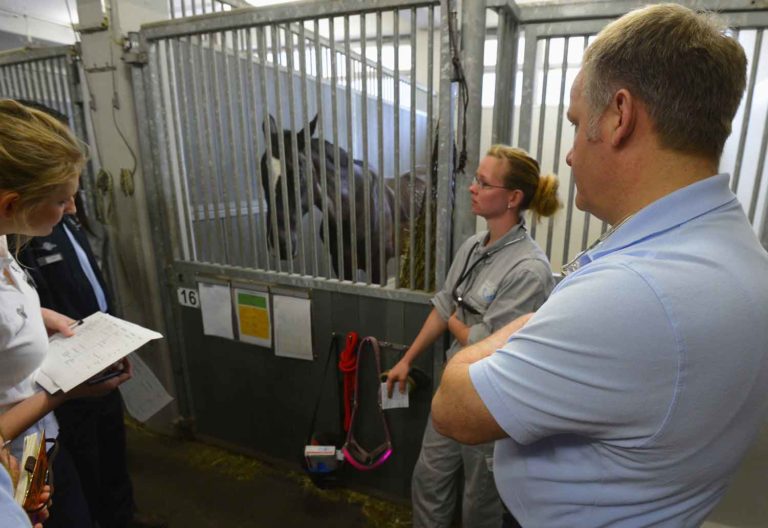The Journal of Veterinary Diagnostic Investigation published a paper entitled “A New Trivalent SnSAG Surface Antigen Chimera for Efficient Detection of Antibodies Against Sarcocystis neurona and Diagnosis of Equine Protozoal Myeloencephalitis,” which is available for purchase from their website.
Researchers from the University of Kentucky, Rood and Riddle Equine Hospital, and Equine Diagnostic Solutions combined two separate ELISA tests into one and proved it works just as well in diagnosing EPM. Following is the abstract of the paper.
Abstract
Enzyme-linked immunosorbent assays (ELISAs) based on the SnSAG surface antigens of Sarcocystis neurona provide reliable detection of infection by the parasite. Moreover, accurate serodiagnosis of equine protozoal myeloencephalitis (EPM) is achieved with the SnSAG ELISAs by measuring antibodies in serum and cerebrospinal fluid (CSF) to reveal active infection in the central nervous system. Two independent ELISAs based on recombinant (r)SnSAG2 or a chimeric fusion of SnSAG3 and SnSAG4 (rSnSAG4/3) are currently used together for EPM serodiagnosis to overcome varied antibody responses in different horses. To achieve reliable antibody detection with a single ELISA instead of 2 separate ELISAs, rSnSAG2 was fused with rSnSAG4/3 into a single trivalent protein, designated rSnSAG2/4/3. Paired serum and CSF from 163 horses were tested with all 3 ELISAs. When the consensus antibody titers obtained with the rSnSAG2 and rSnSAG4/3 ELISAs were compared to the single SAG2/4/3 ELISA titers, Spearman rank correlation coefficients of ρ = 0.74 and ρ = 0.90 were obtained for serum and CSF, respectively, indicating strong agreement between the tests. When the rSnSAG2 and rSnSAG4/3 consensus serum-to-CSF titer ratio was compared to the rSnSAG2/4/3 serum-to-CSF titer ratio, the Spearman correlation coefficient was ρ = 0.87, again signifying strong agreement. Importantly, comparing the diagnostic interpretation of the serum-to-CSF titer ratios yielded a Cohen kappa value of 0.77. These findings suggest that the single ELISA based on the trivalent rSnSAG2/4/3 will provide serologic and diagnostic results that are highly comparable to the consensus of the 2 independent ELISAs based on rSnSAG2 and rSnSAG4/3.
Authors
Michelle Yeargan, Izabela de Assis Rocha and Daniel K. Howe, Department of Veterinary Science, University of Kentucky; Stephen M. Reed, Rood and Riddle Equine Hospital; Jennifer Morrow and Amy Graves, Equine Diagnostic Solutions LLC, Lexington, Kentucky.

![[Aggregator] Downloaded image for imported item #18375](https://s3.amazonaws.com/wp-s3-equimanagement.com/wp-content/uploads/2025/09/30140031/EDCC-Unbranded-26-scaled-1-768x512.jpeg)
![[Aggregator] Downloaded image for imported item #18890](https://s3.amazonaws.com/wp-s3-equimanagement.com/wp-content/uploads/2025/11/17113845/EDCC-Unbranded-3-scaled-1-768x512.jpeg)

